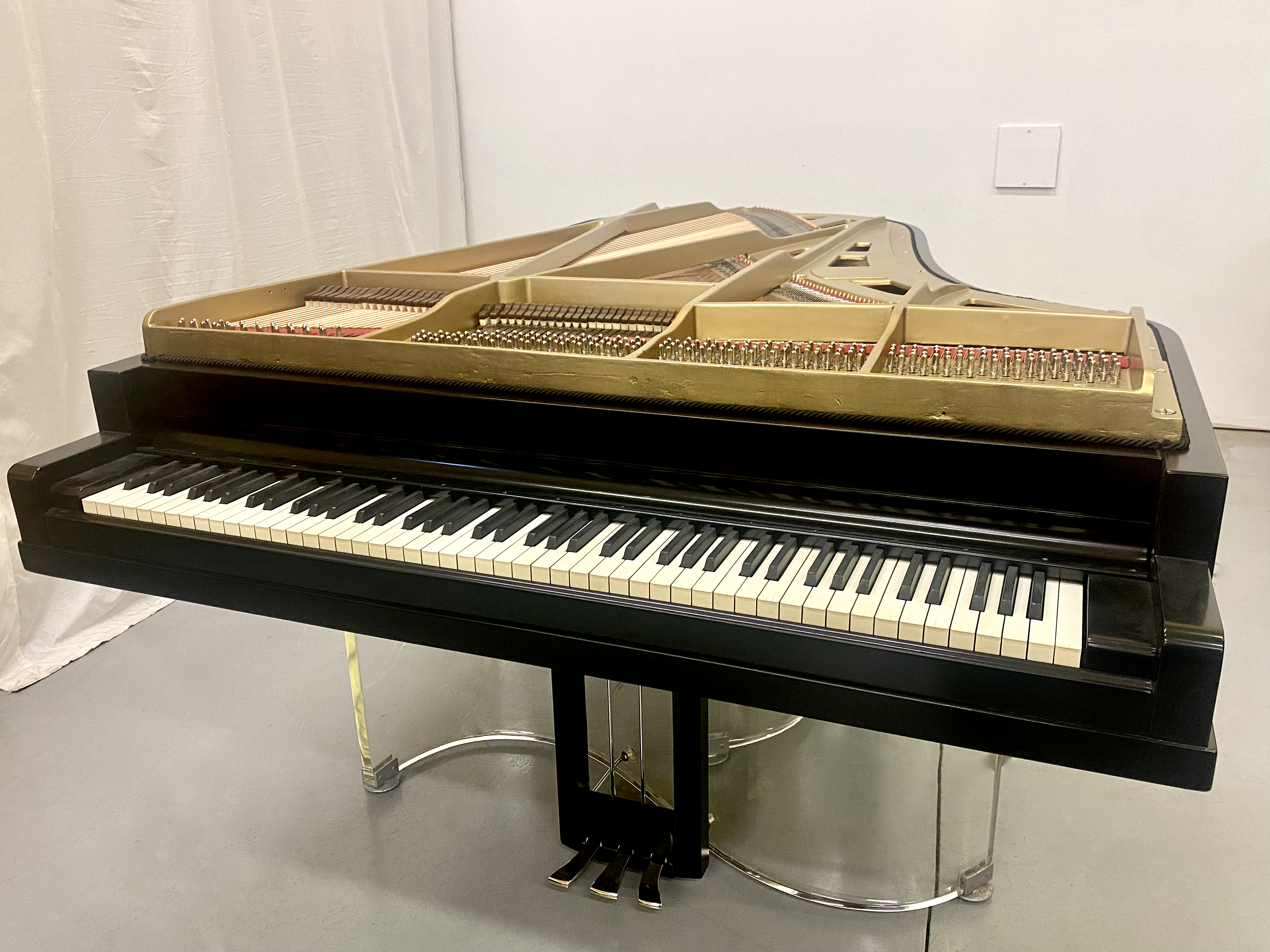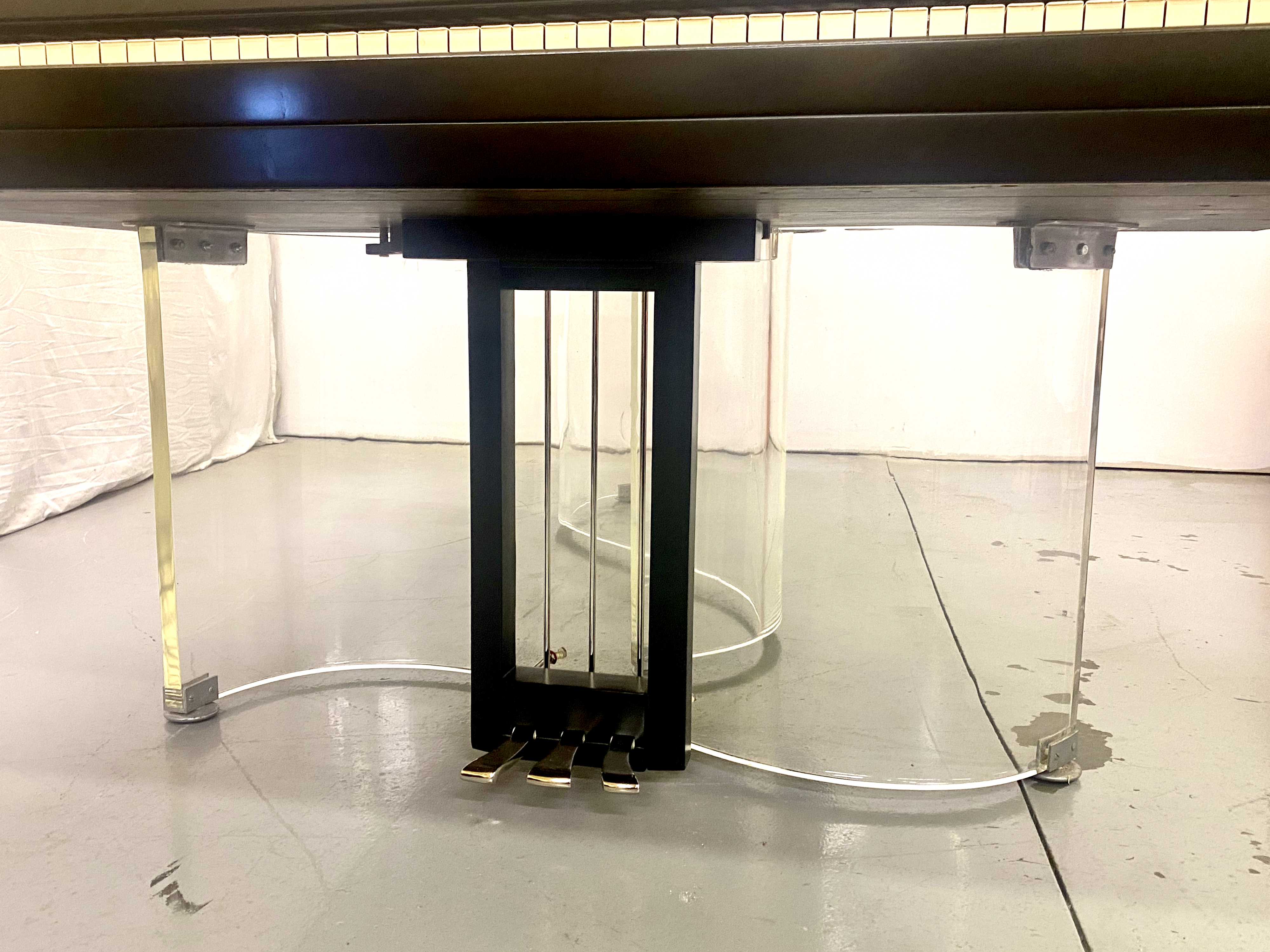The History of Wurlitzer Pianos: Spotlight on the Rare Model 770 Art Deco Piano
Wurlitzer pianos represent a fascinating chapter in American musical instrument manufacturing. From their humble beginnings to their innovative designs, these instruments have shaped both musical history and decorative arts. Among the most extraordinary Wurlitzer creations is the exceedingly rare Model 770 – an art deco marvel that exemplifies the company's innovative spirit.

The Wurlitzer Legacy: A Rich History in American Music
The Wurlitzer story begins in 1856 when Rudolph Wurlitzer, a German immigrant, founded The Rudolph Wurlitzer Company in Cincinnati, Ohio. Initially importing musical instruments from his native Germany, the company gradually expanded into manufacturing various instruments, including pianos, organs, jukeboxes, and theater organs.
By the early 1900s, Wurlitzer had established itself as a significant player in the American piano industry. The company's acquisition of the Melville Clark Piano Company in 1908 marked its serious entry into piano manufacturing. Throughout the early 20th century, Wurlitzer continued to grow, eventually operating multiple manufacturing facilities across the United States.
What set Wurlitzer apart from other piano manufacturers was their willingness to experiment with innovative designs and manufacturing techniques. This experimental approach would reach its zenith with models like the extraordinary 770 grand piano.
The Art Deco Movement and Musical Instruments
The Art Deco movement, which flourished from the 1920s through the early 1940s, had a profound impact on industrial design, architecture, and decorative arts. Characterized by bold geometric forms, vibrant colors, and a celebration of modern materials and technology, Art Deco represented optimism, luxury, and technological progress.
While furniture, buildings, and decorative objects readily embraced Art Deco aesthetics, musical instruments – particularly pianos – generally remained conservative in their design. Traditional piano manufacturers like Steinway, Baldwin, and Chickering largely maintained classical styling even as the Art Deco movement transformed other industries.
Wurlitzer, however, saw an opportunity to differentiate themselves through design innovation. As America emerged from the Great Depression, Wurlitzer's design team began experimenting with modernist approaches that would culminate in their most avant-garde creation: the Model 770.
The Wurlitzer Model 770: A Design Revolution
Introduced in 1940 at a Chicago exhibition, the Wurlitzer Model 770 grand piano represented a radical departure from traditional piano design. In an era when most grand pianos featured ornate wooden cases that completely enclosed the instrument's mechanisms, the Model 770 took a dramatically different approach.
The most striking feature of the Model 770 is its transparent design elements. Using the then-revolutionary material Plexiglass (acrylic), Wurlitzer created a partially see-through piano that exposed the typically hidden mechanisms of the instrument. The strings and plate were elevated and displayed rather than concealed, transforming the piano into a piece of functional art where the music-making process itself became part of the visual experience.

The Model 770's lidless design further emphasized its modernist approach. Rather than the traditional hinged lid that could be propped open during performance, the 770 featured a permanently open design that showcased the instrument's inner workings. Sweeping Plexiglass arabesques created a striking silhouette that embodied Art Deco's emphasis on dynamic, flowing lines.
Why Is the Wurlitzer 770 So Rare?
Despite its innovative design, the Wurlitzer Model 770 never entered full-scale production. Several factors contributed to its extreme rarity:
- Timing: The piano was introduced in 1940, just as the United States was preparing to enter World War II. The war effort soon redirected manufacturing resources away from luxury goods like experimental pianos.
- Material constraints: Plexiglass, still a relatively new material in 1940, would soon be prioritized for military applications, particularly for aircraft.
- Production complexity: The unique design required specialized manufacturing techniques that weren't easily scalable.
- Conservative market: Even in the most design-forward households, such a radical departure from traditional piano aesthetics represented a significant risk for potential buyers.
As a result, historical records suggest that only a handful of Model 770 pianos were ever produced, with just two known examples surviving today. One resides in the permanent collection of the Schubert Club Musical Instrument Museum in Saint Paul, Minnesota, making the privately-owned example currently available at Texas Piano Storage an exceptional rarity.
The Significance of the Wurlitzer 770 in Piano Design History
The Wurlitzer Model 770 represents a fascinating moment in piano design history – a bold experiment that challenged fundamental assumptions about how a piano should look. Its influence can be seen in later transparent or "see-through" pianos, including modern acrylic grand pianos from manufacturers like Schimmel and Crystal Music Company.
Beyond its aesthetic innovation, the 770 demonstrates how musical instrument design intersects with broader cultural movements. It stands as a tangible example of how Art Deco's enthusiasm for new materials and visual drama influenced even traditionally conservative product categories.
For collectors and museums, the extreme rarity of the Wurlitzer 770 places it in a category of objects that transcend mere musical instruments to become important cultural artifacts. Each surviving example offers irreplaceable insight into a particularly innovative moment in American manufacturing history.
Owning a Piece of Piano History
For the discerning collector, the opportunity to acquire a Wurlitzer Model 770 represents a once-in-a-lifetime event. Unlike more common vintage pianos, which might come to market with some regularity, the extreme scarcity of the 770 means that acquisition opportunities are exceptionally rare.
Beyond its value as a musical instrument, the 770 offers:
- Museum-quality significance: As one of only two known examples, it holds substantial historical importance
- Design-historical relevance: Its place at the intersection of musical instrument design and the Art Deco movement
- Conversation-piece status: A truly unique focal point that tells a compelling story about American innovation
- Investment potential: Extreme rarity typically correlates with value retention and appreciation
Whether destined for a private collection or a public institution, this extraordinary piano ensures its owner will be the custodian of an irreplaceable piece of American musical and design history.
Experience This Rare Wurlitzer Piano In Person
We are privileged to offer the opportunity to view one of only two known Wurlitzer Model 770 Art Deco pianos in existence. Contact us to schedule a private viewing of this museum-quality instrument.
View Piano Details